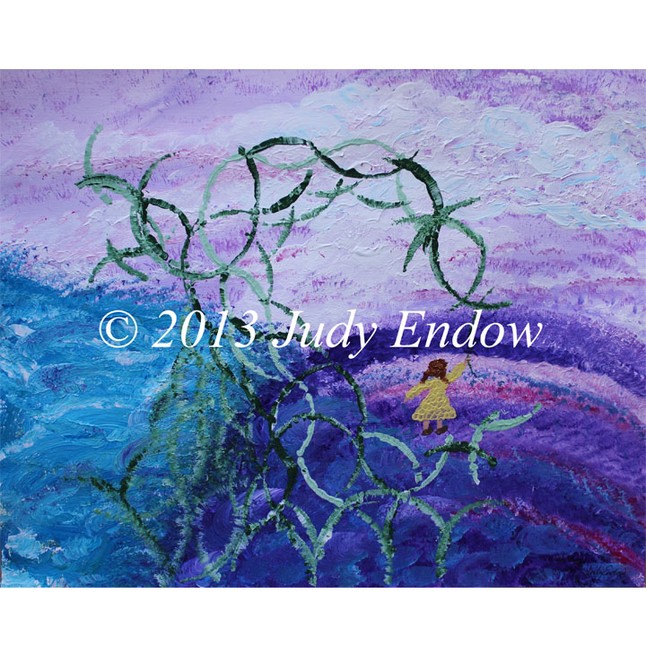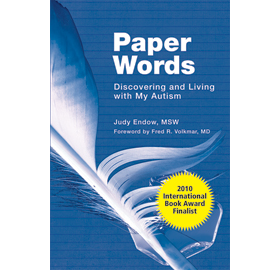French Translation: L’autisme est-il un handicap ou use différence?
So many ideas in the larger autism community often become a debate. As an autistic this black-or-white, choose-your-side sort of thinking is very neurologically friendly to me. I like clear choices. But I also believe we are often unwittingly duped into believing we need to choose a side only because the idea is presented as a dichotomous choice.
“Is autism a disability or a difference?” is one of these questions posed as a dichotomous choice in the autism community. The way the question is posed gives the impression that there is one correct answer.
When Autism is a “Difference”
Many autistic adults would like if autism were recognized as a difference rather than a disability. Many in this group are the walking, talking autistics. We can go out in public by ourselves. Some of us are parents. We are your friends, neighbors and co-workers. We might seem to be a bit odd, but we can fit in enough to at least be allowed a place in the world at large.
Even so, being out and about in the community poses significant challenges. The sensory overload and neurological processing differences dictated by our brain along with ever present challenges with communication and conventional social understanding are such significant differences, even though we can accommodate for them, we are usually exhausted from doing so by the end of the day.
It seems to me that when we are able to be out and about in our communities unassisted by a hired person we are often expected to look and act like typical people regardless of the challenges imposed by the neurological difference of our autism. Because we appear to be like others, our difficulties and needs are thought to be our own personal problems. Even though we have an Autism Spectrum Disorder diagnosis that by definition means we have significant difficulties in many areas of life, others often look at us and ascribe negative intentionality and character flaws to us.
When Autism is a “Disability”
For some of us, the way our autism plays out in our body means we are faced with numerous obstacles to overcome every day of our lives. We may need communication devices, occupational therapy equipment and to employ personal care workers. For those of us whose autism presents challenges with these kinds of needs – we understand the disability aspect of our autism.
We often need a hired person to accompany us when we go out into the community or to support us so that we can communicate. In fact, we may require 24/7 support staff. And for some, our autism plays out in our body in such a way that people can see it as we approach! For us, people can see we need help. Rarely do others look at us and attribute our difficulties to laziness, lack of motivation, self-centeredness or any other negative character trait.
But because our autism is so visibly noticed along with the significant support we often need, people make other sorts of assumptions about us. Our needs are so obvious that people do not always consider that we also have strengths and abilities along with likes and dislikes. Often we are placed in menial jobs as adults (if we are even deemed capable of working) and our support staff is switched around as if people are interchangeable and relationships do not matter to us. We are not often seen as people who have preferences, desires, abilities, skills and talents as the time and energy of others are focused on the meeting deficits and needs imposed by our disability.
Negative Outcome of Choosing Disability OR Difference
As an autistic person when I am asked to choose one – either “disability” or “difference” – I feel like I am being asked, in essence, which part of me I would like to ignore. When I choose “disability” it means my talents, strengths, abilities and preferences are ignored. When I choose “difference” my very real difficulties and needs are not only ignored, but I am often blamed for what others consider my stubbornness in hanging on to negative “character flaws.”
Might We Incorporate Both Disability AND Difference?
What if we all chose both disability and difference? Would we then be totally ignored or totally supported? There it is again – another dichotomous choice posed as if it were a real choice!
In the meantime, please know when you ponder whether autism is a disability or difference this is a false choice sort of deal. It serves nobody well and has poor outcomes. And yet we somehow feel that we need to choose between disability or difference. Why is that?
Painting is Lake Tail Mist
Available in sets of 5 greeting cards
and acrylic prints in three sizes
in the Art Store at www.judyendow.com
BOOKS BY JUDY ENDOW
Endow, J. (2019). Autistically Thriving: Reading Comprehension, Conversational Engagement, and Living a Self-Determined Life Based on Autistic Neurology. Lancaster, PA: Judy Endow.
Endow, J. (2012). Learning the Hidden Curriculum: The Odyssey of One Autistic Adult. Shawnee Mission, KS: AAPC Publishing.
Endow, J. (2006). Making Lemonade: Hints for Autism’s Helpers. Cambridge, WI: CBR Press.
Endow, J. (2013). Painted Words: Aspects of Autism Translated. Cambridge, WI: CBR Press.
Endow, J. (2009). Paper Words: Discovering and Living With My Autism. Shawnee Mission, KS: AAPC Publishing.
Endow, J. (2009). Outsmarting Explosive Behavior: A Visual System of Support and Intervention for Individuals With Autism Spectrum Disorders. Shawnee Mission, KS: AAPC Publishing.
Endow, J. (2010). Practical Solutions for Stabilizing Students With Classic Autism to Be Ready to Learn: Getting to Go. Shawnee Mission, KS: AAPC Publishing.
Myles, B. S., Endow, J., & Mayfield, M. (2013). The Hidden Curriculum of Getting and Keeping a Job: Navigating the Social Landscape of Employment. Shawnee Mission, KS: AAPC Publishing.
French Translation
L’autisme est-il un handicap ou une différence?
Translation/traduction: Marie Lauzon, C. Tran./trad. a. (Canada) marielauzon.com
Originally written for and published by Ollibean on June 20, 2014



